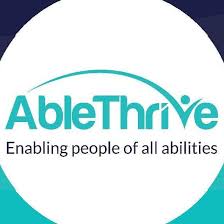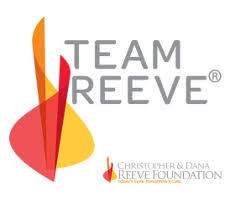|
(This blog tells my family's story. To see more, click "blog" at the top of this webpage.)
The Paralympic Trials meet in Minneapolis created anxious uncertainty. Would Beth make the U.S. team going to Greece? If she did, could she leave Athens early to start her freshman year at Harvard? Additional stress: Beth would attend Trials as a member of the Toledo team, yet she had decided to switch to her hometown team. ...And continued to put off telling GTAC. Coaches from both teams would be at Trials. Previous times and records faded to irrelevancy. The only races that counted at Trials would take place in the three days of the meet. This fact put the few swimmers with quadriplegia at a disadvantage, since they had a higher likelihood of health issues that impacted performance. The first year Beth swam competitively, her times varied widely. Three years later, she was stronger with fewer health issues. As a result, her races usually fell into a more consistent range. I updated my list of Beth’s best times and official records. I hoped to add to my list at Trials. However, for an S3 swimmer, new American Records were no guarantee for a spot on the U.S. Paralympic team going to Greece. John, Beth, and I flew to Minneapolis with the help of a Challenged Athletes grant. Airport security glanced in our direction and waved Beth through. She put up with a cumbersome process to help her to an aisle seat in the plane. John and I climbed over her to get to the middle and window seats. At the hotel, Beth twisted nail polish bottles open with her teeth for her pre-meet ritual. Her fingernails shined in red, white, and blue, fitting choices for Trials. She didn’t care about her painted nails looking less than perfect. Beth trusted that more practice would yield better results—like so many other things. Next: A Teenager's First Trip Overseas?
4 Comments
 (This blog tells my family's story. To see more, click "blog" at the top of this webpage.) At the end of her junior year of high school, Beth thought about where to apply to college. All teenagers should have that choice, with or without a disability. However, the thought of college with quadriplegia made me anxious and uncertain. I wondered what my role would be. What if she didn’t make the best choice? What was the best choice? On the open road again in a little blue car, Beth and I took turns driving from northwest Ohio to the East Coast. We turned up the volume on John Mayer or mix CD’s she made, and sang along. First stop: Johns Hopkins University in Baltimore. As I pushed Beth up and over a formidable hill on campus, I couldn’t stop myself from stating the obvious: she could not wheel it on her own. She responded that an alternative route, much longer, looked a little easier. We had agreed that I would help during her first year at college, but the logistics were hazy. Our tour guide rambled and I imagined her wheeling alone on the Johns Hopkins campus. She still refused to consider a power chair or power assist wheels. The odds of Beth letting me push her chair through rain and snow? Zero. After we saw the unusual billboard in Seattle (Quadriplegia at Harvard: A+), I looked online and found the young woman pictured on the billboard. Brooke Ellison wrote a book with her mom titled Miracles Happen: One Mother, One Daughter, One Journey. With an injury like Christopher Reeve, Brooke needed a trach to breathe and could not move her arms. She shared her college dorm room with her mom and they moved through all of life’s hours together. Three years after Beth’s injury, I thought I would stay in her college dorm the first year, but I knew our days as a team were numbered. My youngest daughter kept trying to master the time-consuming details of self-care as a C6-7 quad. She worked every day on her biggest goal, complete independence, even though the odds were not in her favor. Encouraged by small victories, Beth never gave up. The third destination of a non-stop summer: Connecticut! 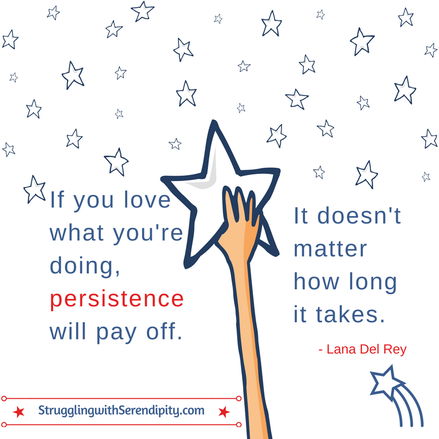 (This blog tells my family's story. To see more, click "blog" at the top of this webpage.) Beth’s second swimming summer began with a twelve hour drive from NW Ohio to Minneapolis for her second USA Swimming Disability Championships. Swimming remained complex and challenging, but she drove through Chicago on congested highways with ease. Our flight to Seattle a year earlier was the only time we had been west of Chicago. Our hotel sat across from the parking lot from the expansive pool complex at the University of Minnesota. The first morning of the meet, we met her coach and teammate at the pool. Beth, sixteen, asked me to stay nearby, since I understood her developing routine with goggles, swim caps, towels, bathroom breaks, positioning, and showering. For me, that meant hovering at a distance on the bleachers until she wanted my help. I didn’t mind. I supported her quest for independence, though none of us knew if more progress on that front was even possible. Waiting to swim, new records set in fast races intimidated her. Expectations soared along with nerves. As Beth predicted one year earlier, she qualified for finals. Her previous national meet remained the only one where she had not. Despite the achievement of finals cuts, her morning races were sluggish, followed by discouraging finals times. After another dawdling race on the second morning, Beth’s frustration grew. The only S3 woman at the meet, she would win each race, a fact she did not appreciate. She wanted to achieve swim times close to her best ones—or faster. Immediately after the second morning’s races, time trials allowed swimmers to clock official times in events of his or her choosing. I made a rare request to her coach. I asked him to sign her up for a time trial in the 200 back. Three years after her injury, Beth earned her first official Paralympic American Record in the S3 classification for the 200-meter backstroke. We both knew it was the easiest record to beat, but I reminded her that just a year earlier, she wasn’t strong enough to swim nonstop for 200 meters. As I anticipated, the success tempered her disappointment with other races. We tumbled into the predictable schedule of a three day meet for swimmers who qualified for finals: wake up, warm up, race, cool down, eat, recover, rest, and repeat. And phone calls to John, Ben, Maria, and Peggy. The last day of the meet, after prelims, we strayed from the routine to visit the Mall of America. Beth let me push her wheelchair, a rare occurrence, to preserve her strength for finals. That evening, we laughed with her coach after she swam her fastest race of the meet after shopping. Even so, her resolve to work harder magnified. “Once I realized I was good in the water,” she said, “I trained really hard and put a lot of focus and effort into it, because it was this new avenue for me. I hadn’t thought I could be an athlete anymore.” After Minneapolis, Beth set ambitious new goals. In addition to mastering the forward freestyle, far from being attained, she aimed higher for the ultimate American Record in the 50 meter freestyle, by far the most difficult S3 record to beat. The second destination of a non-stop summer: Maryland!  (This blog tells my family's story. To see more, click "blog" at the top of this webpage.) The sunshine of a new spring, along with my once-a-week counseling sessions, kept my well of worry from overflowing. Nearly three years post-injury, Beth showed me that her life with quadriplegia could be so much more than I had imagined at first. My anxiety dropped from a scary level to something more manageable. Chronic head pain remained a challenge. My obsession with worst-case scenarios improved from hourly to only some days. Most teenagers felt invulnerable and didn't worry about risks. That group included my youngest, despite her disability. We lived a few blocks from the high school and Beth liked the idea of wheeling there instead of driving with me. My first thought: NO! How could it be safe for her to cross alleys and streets in a wheelchair? Beth wanted to try. On a weekend, I walked next to her on a trek to the high school. The first obstacle involved wheeling over driveway stones to get to the sidewalk in front of our house. Next, the old neighborhood had broken sidewalks and no curb cuts. We tried a narrow alley instead that had bumps and stones and potholes. And almost zero visibility for cars with bushes blocking the view. When we crossed Tiffin’s Washington Street in between parked cars, drivers approached fast. On the high school grounds, there was no way to avoid either a long incline at the front entrance or a harder slope into the parking lot towards the automatic doors. I continued to drive her to and from school. The Quiz Bowl team finished a winning season, undefeated in the league. Against my advice, again, Beth joined the high school spring musical, Hello Dolly. She wore a headset to manage the stage crew while Maria shined in the lead role. After a show, I conversed with friends in the lobby without making a quick excuse to leave. The girls stayed out late at cast parties that followed the show's success. John and I dropped our strict curfew rule after the car accident. A spinal cord injury had changed our perspective, with a new awareness of what really mattered. And what didn't. Beth wasn’t happy with her ACT score for college, so she studied practice books before taking the test again. Not my idea. The second ACT improved on her first composite score by a surprising four points; she credited her English teacher, Mrs. Kizer, for her high English score. Beth set goals on her own and I supported her unconditionally, but not for bragging rights. More than anything else, I needed her to be okay, to be really okay, as she claimed the night of the accident. Was it too much to wish the same for myself, for everyone I loved, and for the rest of the world? Flowers burst into bloom in John's big garden with the ramped walkways. I loved the sunshine. Keeping up with Beth kept me busy and distracted most days, especially when my headache settled at a lower baseline. Lots of comings and goings. School, after-school activities, volunteering, swim practices, and time with friends. Sometimes I drove while Beth, often tired, dozed in the passenger seat. Overbooking her time shifted from a frequent inclination to an ingrained habit. She didn’t want to miss out on anything. Next week: Beth’s first swim competition with the forward freestyle! (This blog tells my family's story. To see more, click "blog" at the top of this webpage.)
“I often swim with non-disabled swimmers at ‘regular’ swim meets,” Beth said. “Many people are surprised that I compete in swimming since I use a wheelchair, and it has been fun for me to show how people with disabilities can be competitive in sports just as much as others.” Coach Peggy had a passion for swimming that I had not seen before. She enthusiastically approached every practice with new ideas, willing to try until something clicked. She did not rely on standard drills and techniques for able-bodied swimmers. The shared excitement of small successes propelled Beth forward. “It was a new adventure for me,” Peggy explained. “I was in the water with anatomy books on the deck and I would ask her to move certain parts of her body, and then I’d try to trace where the nerve ending connected to the muscle. The light bulb went off then because I understood that she didn’t have the necessary nerves firing to do a particular movement. So we’d try a different movement to attempt the same goal. It took a lot of trial and error, but she was very willing.” So was her new coach. Peggy’s focus gradually changed, “from what she (Beth) didn't have to what she did have access to.” Beth registered for her second USA Swimming Disability Championships, to be held in early June in Minneapolis. Her times at recent meets qualified her to attend the meet as an S3, as she had predicted at the last one in Seattle. At the YMCA about twice a week through the spring, I walked the nearby track instead of staying poolside to read. I didn't need to watch for her head dipping too long underwater anymore. She had learned how to adjust and continue with muscle spasms. She stayed in the pool 30-40 minutes with breaks when she was on her own. Practices with coaches always ran longer. We drove to Toledo at least once a week. Beth combined a practice with a new favorite: volunteering at GTAC’s WaterWorks to teach safety skills and basic swimming to young children with a disability. One Saturday, she spoke to the kids about her spinal cord injury before getting in the water with them. The first thing Beth taught them was how to roll on their backs to breathe. Just like she had been taught at her first water therapy session after her injury. Beth loved WaterWorks Saturdays, the highlight of her spring. (This blog tells my family's story. To see more, click "blog" at the top of this webpage.)
I worked at not being a pushy parent and continued to follow my 16-year-old daughter’s lead. If Beth asked to go to the YMCA pool to practice on her own, we went, but I never suggested it. I worried about her getting run down from pushing herself too hard. Everything took more time and effort with a spinal cord injury. After Beth figured out the balance needed to move on her stomach in the water, the butterfly seemed to be the most doable forward stroke. She took a breath after two arm strokes of the butterfly, as she did with the backstroke. Breathing was more of a challenge with her initial freestyle attempts, but the breaststroke was the hardest. “When I first swam the breaststroke, I went backwards,” Beth said. Once a week in Toledo, she tried to learn the butterfly, freestyle, and breaststroke. A coach sometimes worked with her in the water before her backstroke laps. At her practices without a coach at our local YMCA, she experimented with the forward strokes, despite impaired arms and no use of her legs. Beth competed with the butterfly for the first time at the Turkey Meet in Toledo on Thanksgiving weekend. She loved how it felt to fly (slowly) through the water. She also selected her events for the Ohio Senior Meet in March. With typical courage, she signed up for the 150 Individual Medley (IM) that included strokes she could hardly swim. A week before the March meet, a Toledo coach suggested dropping the IM. Beth talked him into keeping it. It wasn’t smooth or pretty, but she swam the butterfly and breaststroke (and backstroke) nine months after Seattle at the Senior Meet in Erlanger, Kentucky. I lifted her out of the pool while the packed crowd applauded. Beth and I hadn't known that our hometown had a swim club — until they attended the same Senior Meet with their coach, Peggy Ewald. We had only known about the high school's team. Peggy talked to Beth’s Toledo coaches and volunteered to help with some of her solo practices in Tiffin. We met Peggy at the YMCA pool about once a week as Beth pursued her quest to master all of the strokes. They took on the intricate details of moving and breathing in the water. “Coach Ewald was excited to work with me from the first time I met her,” Beth said. (This blog tells my family's story. To see more, click "blog" at the top of this webpage.)
The logistics of swimming with quadriplegia evolved. Beth wore her one-piece suit to the Toledo or YMCA pool, but partway, up to her waist, with loose sweatpants over the suit and a T-shirt on top. In the locker room, I took off the shirt and pulled up the suit to put the straps in place. After a practice, I helped with the sweatpants over the wet suit before we headed home to shower. With improved, but not normal, balance, she asked to try the white plastic bench again. It worked with my help and we happily gave away the cumbersome metal shower chair with the rails. Five months after our Seattle trip, Beth achieved what I thought would be impossible. I watched at the YMCA pool as she advanced forward on her stomach for the entire 25-yard length for the first time, her arms working wildly below the surface but advancing at a snail’s pace. Her legs dragged behind. She conquered the basic balance of forward motion—without approximating a swim stroke. I expected her to stop at the wall after the 25 yards. Instead, she took only a moment to take a bigger breath before pushing off with her arms and going a little farther. Back on the wall to rest, she flashed a happy smile my way. Priceless. I returned her smile. All of my worrying and waiting for her optimism to plunge into depression had been wasted. Thankfully. For Beth, the achievement was only a small step toward a bigger goal. At the swim practices that followed, she worked on increasing the forward distance. And tried to add the arm movements of the butterfly, which seemed more doable at first than the breaststroke and freestyle. Her attempts to circle her arms out of the water while moving forward resembled a clumsy, erratic butterfly. Her backstroke had started in a similar way before finding a regular rhythm. I admired her tenacity, but I wasn’t sold on her mission to get better and swim all the strokes. No one knew how far she could go. I expected an impassable physical barrier to abruptly halt her progress. Not Beth. Legs and hands that didn’t work were a given. She accepted that her damaged arm and trunk muscles would not strengthen nearly as easily or nearly as much as perfect ones. Willing to wait weeks and months for small bits of progress, Beth tapped into a well of stubborn teenage persistence.  (This blog tells my family's story. To see more, click "blog" at the top of this webpage.) Beth, 16, passed her driving test on a cold autumn day. Comfortable behind the wheel of her little blue car, she held a knob on the easy-turn steering wheel with her right hand. Her left hand pushed or pulled a bar to accelerate or brake. Driving was fun, but not getting in and out of the car by herself. She didn’t want to use a sliding board. She scooted to the far right edge of the chair cushion and put one hand on the driver’s seat and the other on the chair cushion. The goal was to lift her trunk high enough with her arms to bridge the gap. A far-off goal, but Beth still kept trying. Every time. I stood right behind her and intervened with a boost so she wouldn’t fall. I quickly learned that the belt loops of her jeans ripped easily, so I grabbed the side of her jeans instead to lift her over the gap. When Beth was with others, some still helped by grabbing the belt loops. At first, I sewed up rips and the holes they left. But when they just ripped again, I gave up. At that time, her shirts covered the holes. Just like the bottom of her jeans always hid her socks. Important things for my usually easy-going 16 year old. ;-) Another driving problem: the empty wheelchair after she was in the drivers seat. Beth liked the idea of taking off the wheels of the chair and lifting the pieces across her body to the passenger seat. Unfortunately, it wasn’t practical between the high back of her chair and her strength. The mechanized topper on her car had seemed like the solution. However, the wheelchair needed to be folded and positioned properly on the hook. Plus, the topper was temperamental. When Beth pushed the toggle switch on the remote control to raise the wheelchair, it did not always fall in place at the top properly. Which meant that the car would not start. She resigned herself to the fact that driving would not be a completely independent activity. Even so, she had no regrets about her decision to drive a car instead of a van with a lift. Beth always made time for friends. On the November opening day of the second Harry Potter movie, The Chamber of Secrets, she talked me into letting her drive with no one else in the car while she picked up her best friends. I put her wheelchair in the hatchback without taking it apart. The chair was out of her reach, but I made sure that her cell phone was charged and close by. I was on call but not needed until after the movie when she pulled in the driveway by herself. About five months after our Seattle trip, Beth surprised me by achieving the impossible...  Beth as a toddler :-) Beth as a toddler :-) (This blog tells my family's story. To see more, click "blog" at the top of this webpage.) Beth’s first swimming summer ended with her first Sectional meet in August of 2002. When we drove through Indianapolis to Indiana University, we noticed the unusual billboard again, the same one we saw in Seattle. Quadriplegia at Harvard: A+. Sectionals was another packed to the hilt USA Swimming meet. “A swimmer who uses a wheelchair," Beth said, "is still an unusual sight at most swim meets." Able-bodied swimmers stood on the raised blocks to begin races for all the strokes except one: the back, which always started in the water. Most used their feet and legs to surge off the wall. Beth tried to gain a bit of momentum with her hands pushing off the wall. With rare exceptions, backstroke swimmers alternated their arms simply because it was faster. For Beth, the double-arm backstroke resulted in a better time, despite her head dipping under. She improved slightly on her swim times, but aimed higher. When her junior year of high school started, Beth scheduled a GTAC practice late afternoon every Friday. With the Toledo pool filled to capacity, she learned how to share a lane while a coach supervised her backstroke laps. At the end of every practice, she tried to get out of the pool by herself. Beth pressed her back into a corner of the pool and put her hands up on the ledge behind her, to try to lift herself up and out of the water. She rose just a few inches before falling forward, but she kept trying, regardless. Every practice. In addition to swimming on Fridays in Toledo, Beth asked to go to our Tiffin YMCA with me once or twice a week. I helped her into the water. Her practices without a coach focused on forward motion, the first step in her plans to master all of the swim strokes. I watched her closely from the deck bleachers, since she spent more time under water than above it. She somehow could get herself almost to the halfway point of the 25 yard length with a few short bursts to the surface for rapid breaths. Then she had to give her arms a break and roll onto her back to breathe more deeply. Even if by some miracle she could progress continuously on her stomach for the whole length of the pool, a bigger hurdle loomed: learning the mechanics of the butterfly, breaststroke, and freestyle, with legal modifications for legs that dragged behind and hands that could not cup the water. I worried. And worried. Would failing to achieve this goal tip Beth over the edge to depression? And without her buoyant optimism, how would I be able to move forward? Guilt and anxiety plagued my days and nights. What if overused antibiotics lost their effectiveness? That was how the quad in Green Springs had died of pneumonia in the hospital room next to Beth’s. Or would a blood clot travel to her heart or brain? I was sadly stuck in worst-case scenarios. Thankfully, Beth was not. “My next goal is to make the U.S. National Team that will attend the 2004 Paralympics in Athens, Greece.”  (This blog tells my family's story. To see more, click "blog" at the top of this webpage.) “For the first time, I began training with swim coaches,” Beth said at 16. “I am one of two swimmers with a disability on GTAC (Greater Toledo Aquatic Club).” Beth drove us in her little blue car to swim practice once a week; the GTAC pool was an hour’s drive away. She was a good driver, and sometimes joked with a quote from Rain Man: “I am an excellent driver.” Even so, when another driver cut her off on the highway, I couldn’t stop myself from crying out. I was instantly transported to the anguish and fear of the accident. I quickly apologized for my reaction and praised her for handling the close call well. During a long morning practice, a coach sometimes jumped in the lane with her to better direct and experiment, since no instructions existed for teaching a quad to swim. They worked on her backstroke. The afternoon of the same day, we drove across town to St. Vincent, the hospital where she had stayed in intensive care. Her idea, not mine. “I volunteered in the outpatient physical therapy department for one afternoon a week,” Beth said. “This was a particularly interesting assignment for me since I was still going to outpatient physical therapy as a patient at a different hospital closer to my home. I liked being busy with bed-making and clerical work, and it was easy to relate to the staff and patients.” Beth initiated visits to the Tiffin YMCA pool with me where she approached every practice on her own with a singular focus: swimming forward, not back. With hands that could not cup the water and useless legs that dragged behind, she tried to propel her arms underwater in front of her body. Not attempting a swim stroke, she concentrated on just forward motion several seconds/inches at a time, undeterred by the sheer difficulty of what looked impossible. When her arms faltered and she couldn’t keep her head above water, she rolled on her back to breathe and to get to the wall where she took a break before trying again...and failing again. And again. After only a handful of GTAC practices, we drove to her first competition as a member of the club. The Ohio Senior Meet in Athens took place one month after Seattle. Still shy, Beth rarely practiced with swimmers her own age, so she stayed close to me at the meet instead of hanging out with the other GTAC teenagers in a designated corner. Swimmers amassed everywhere. Beth took the lead when we had to pass through the crowd. She repeated “excuse me” until she said it loudly enough to pass by. Sometimes she reached up and tapped someone lightly with her fist to get their attention. In the packed bleachers, some of the moms were perfectly coiffed and dressed to a T. Never fancy, I was easily intimidated. I was learning that club membership involved expensive dues, swim gear, meet fees, and a wide range of travel-related costs. The backstroke was Beth’s only option at the Ohio Senior Meet. During a race, she swam the final leg by herself. She didn’t swerve in the lane as she had in Seattle four weeks before. The crowd on the deck and in the bleachers applauded as she finished. |
Cindy KolbeSign up for my Just Keep Swimming Newsletter by typing your email address in the box. Thanks!Categories
All
Archives
November 2022
|

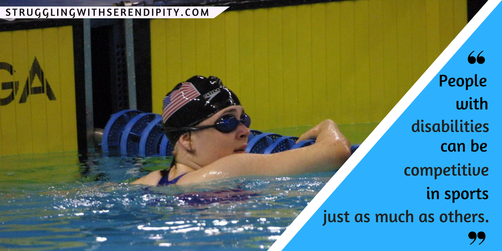
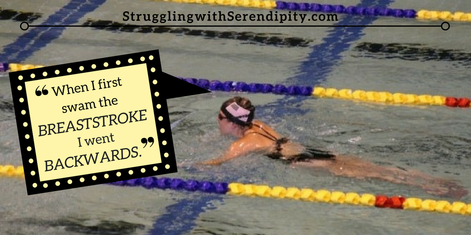
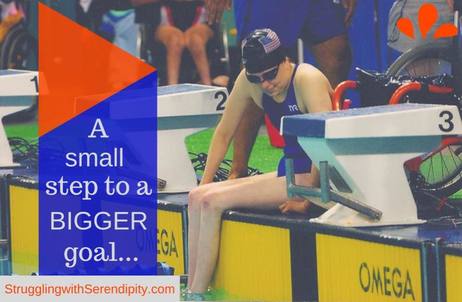

 RSS Feed
RSS Feed





